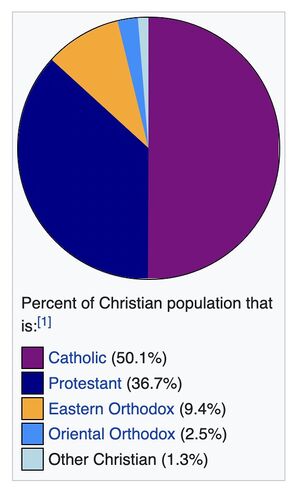To explore the origins of the Catholic Church—a monumental institution in the annals of Christianity—one must embark on a diverse chronological journey weaving through history, theology, and ecclesiastical developments. The formation of the Catholic Church is not merely a point of historical interest; it encompasses the evolution of beliefs, practices, and the socio-political dynamics of its time.
The genesis of Christianity, and subsequently the Catholic Church, can be traced back to the 1st century CE with the life and crucifixion of Jesus of Nazareth. Jesus, a Jewish preacher, galvanized a following that would transform religious paradigms. His teachings—rooted in love, mercy, and radical reinterpretations of Jewish law—laid the groundwork for what would evolve into a distinct religious movement.
Post crucifixion, the revival of Jesus’ teachings can be credited largely to his apostles, particularly Peter and Paul, who played pivotal roles in promulgating the message beyond Jewish communities to Gentile audiences. As Christianity burgeoned, early followers interacted within a milieu rife with diverse philosophical and religious ideologies. The syncretic nature of these interactions contributed significantly to the formative stages of Christianity.
By the turn of the second century, the nascent Christian church faced pivotal challenges. The development of ecclesiastical structures became essential. Local congregations began to form into more organized communities that relied on bishops, presbyters, and deacons, embodying a model that would resemble contemporary church governance. This burgeoning hierarchy crystallized the Church’s identity and authority, distinguishing it from sectarian Judaism.
The term “Catholic” finds its earliest usages in the writings of early theologians. Saint Ignatius of Antioch, writing in the early second century, used the term to refer to the universal faith and practice of Christians. This indicates an early understanding of a unified church, which enjoys a shared belief system despite geographic and cultural differences. The breadth of the early church’s reach, expressed through letters, oral teachings, and pastoral visits, facilitated the establishment of a cohesive doctrine across diverse locales.
As the years unfolded, persecutions persisted, forcing the Church to develop a more nuanced defensive posture. The First and Second Centuries CE saw thousands of Christians martyr themselves, influencing both the perception and persistence of Christianity. Notable figures such as Tertullian articulated the concept of martyrdom as a testament to faith, further galvanizing believers and enshrining the essence of suffering for one’s beliefs.
The Edict of Milan in 313 CE marked a watershed moment in the history of the Catholic Church. Emperor Constantine’s proclamation effectively legalized Christianity, allowing it to flourish within the Roman Empire. This was not just a matter of political implications; it gave rise to a synthesis of ecclesiastical authority and imperial patronage. The Church began to acquire substantial influence, both spiritually and temporally, sculpting socio-political landscapes across Europe.
Councils, such as the Council of Nicaea in 325 CE, solidified doctrinal coherence, particularly regarding the nature of Christ and the Trinity. These gatherings represented a burgeoning desire to establish orthodoxy amidst rising heretical movements. The Nicene Creed, formulated during this era, encapsulated core beliefs of the faith and crystallized the Church’s theological jurisdiction. This early commitment to orthodoxy established the groundwork for the Catholic Church as a monolithic entity.
As Christianity spread throughout Europe, the establishment of monasticism in the early medieval period further consolidated the church’s influence. Monastic communities, such as those instantiated by St. Benedict, became centers of learning, agriculture, and social services. These institutions served as bastions of Christianity and played crucial roles in the preservation of knowledge during tumultuous periods, notably the Dark Ages.
It is crucial to recognize that the term “Catholic Church” encompasses numerous dimensions, including its sociopolitical maneuvers, theological complexities, and cultural implications. From its inception as a small sect to its expansion into a global denomination, the Catholic Church adapted to diverse cultures while maintaining core doctrinal tenets. The Renaissance to the Reformation era presented both challenges and invigorating reforms within the Church, ultimately leading to fragmentation and the rise of Protestant movements. These dynamics forced the Catholic Church to engage with its own convictions; consequently, the Council of Trent in the 16th century initiated significant reforms, countering emerging critiques while reaffirming Catholic doctrine.
The 20th century witnessed an intensified global outreach, with the Second Vatican Council (1962-1965) redefining the Church’s engagement with the modern world. Its call for ecumenism, liturgical reforms, and the promotion of a more inclusive dialogue particularly shaped contemporary Catholic identity. These initiatives reflect the Church’s ongoing evolution, embodying its adaptability while remaining anchored in its rich historical legacy.
In conclusion, the formation of the Catholic Church is a complex tapestry woven from historical events, theological developments, and sociocultural dynamics. Its journey from a marginal sect to the most significant Christian denomination is marked by profound challenges and transformative milestones. Understanding the origins and evolution of the Catholic Church encourages a deeper appreciation of its role in shaping both spiritual and secular realms throughout history. A comprehensive exploration reveals that its legacy is not merely a series of events but a rich narrative that continues to influence countless lives today.



